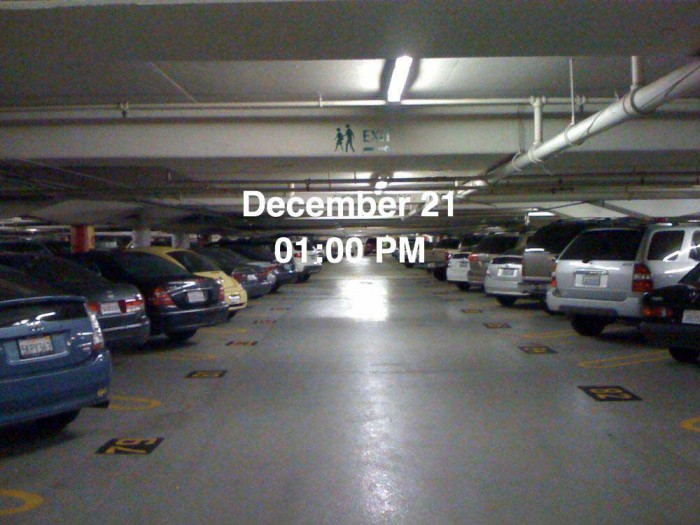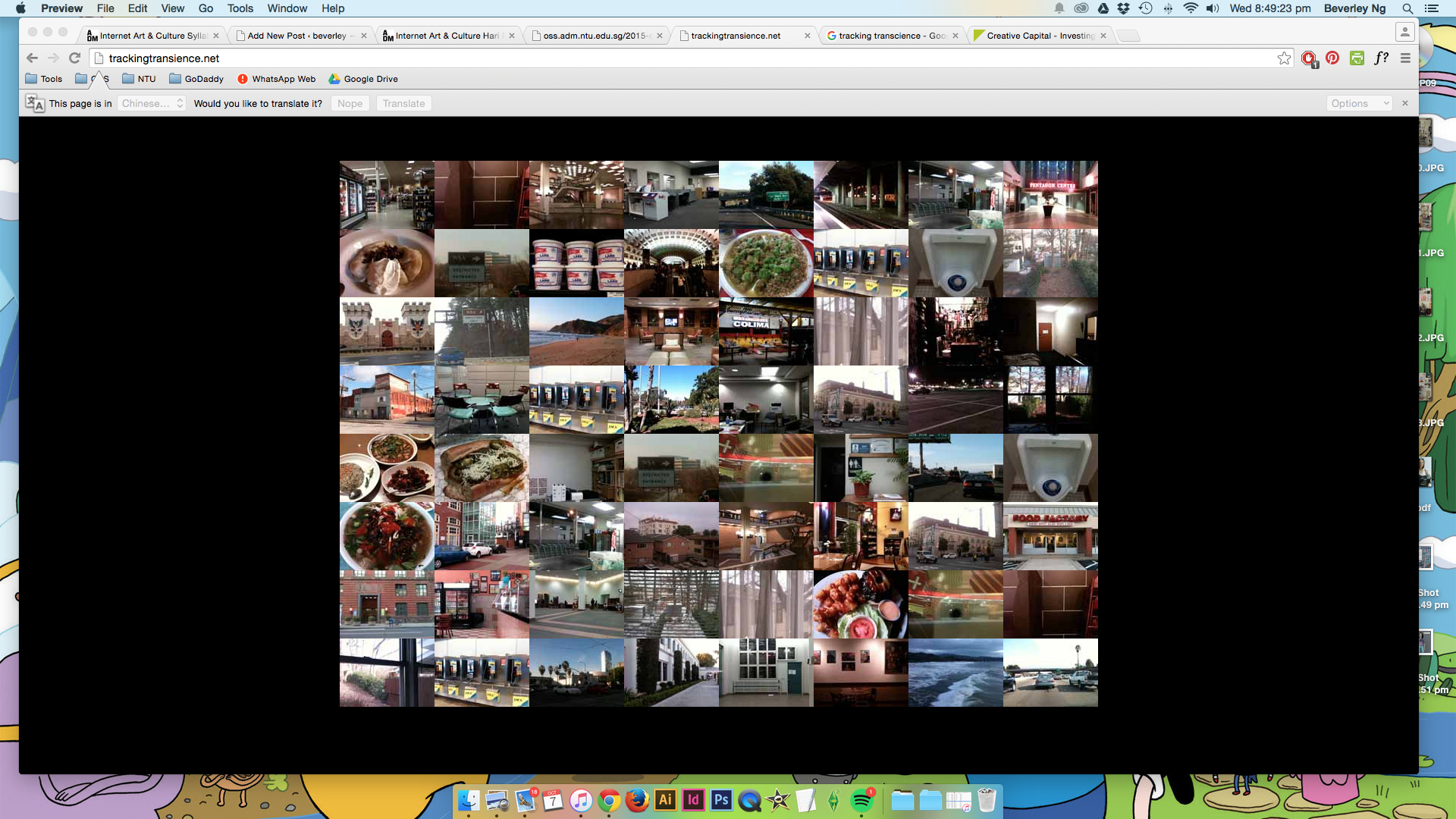Hasan Elahi’s work Tracking Transcience is a webcam project. He developed a GPS tracker and a network device that allows details of his current location to be made available online. Here’s a description of the work:
an embrace of surveillance for its subject’s own protection; Elahi has protected himself from unwanted scrutiny by making his entire life and whereabouts publicly accessible.
— from Creative Capital
Which gives this project the subtitle: The Orwell Project — more than just putting this information out there, Hasan is also critiquing contemporary investigative and surveillance techniques.
Think of Tracking Transcience as a self-updating blog/Instagram. The website refreshes periodically with new sets of images. The homepage image displays Hasan’s current location.
Here’s a generic webcam capture from the website. I found this capture to perfectly embody the description of the webcam as stated in the reading:
Its low resolution, grainy pixelation lends it an antiquated, pre-television quality, while its stubborn stasis echoes the stern discipline of the surveillance camera. These qualities imbue the webcam with both a sense of documentary authenticity and of liveness that is central to its appeal and status: people log in to webcams to see what someone is actually doing now (or what is actually happening in the space now)
The situation in this photo is as perfectly real as reality: the mess on the table is reflective of an individual with a desk-bound job. The chair turned away from the table suggests the individual getting up from the desk and moving quickly away; as if we just caught this moment just as he left the table. It’s this kind of authenticity that gives the webcam its sense of appeal and also the eeriness of surveillance.
Some other images from the website include the meals he had, which are less creepy.
Here’s a grid display of webcam snaps, which is kind of like a montage of what he is up to at various points during the day/week. What I find fascinating about this in particular is that it even captures a urinal, which reveals that this network device goes with him almost everywhere.
Another interesting point raised about the webcam in the reading is the behaviour/subject that is being placed in front of the camera. The images generated by a camera of any kind suggests the user’s attitude towards the camera, as pointed out in the reading: flirting with the camera, impressing the camera, and ignoring the camera. In the case of Tracking Transcience, Hasan Elahi is likely to be ignoring the camera. He does make an effort to place the camera in such a way that we get a clear view of what he is doing/looking at, but the footage are nothing very controversial or extremely fascinating, perhaps just rather accurate depictions of his reality.





Maybe if you were to share with us on how he was mistook for a terrorist at the airport, give birth to this work would make us understand more on his intention. Maybe he is a terrorist after all, making all this images as research for his documentation before the big ‘project’. hahaha.
Kamarul, he was mistaken as a terrorist because of his middle-eastern roots. But the project triggered this critique of surveillance and how we are being watched everyday. What is extraordinary, which Beverley points out, is how this project became a critique of the way we capture and authenticate reality itself. By stripping himself (and other people) from his images, they taken on a “realistic” Webcam like quality of his surroundings. Hence, he has become a kind of human surveillance camera, turning the camera on everything around him, rather than himself.